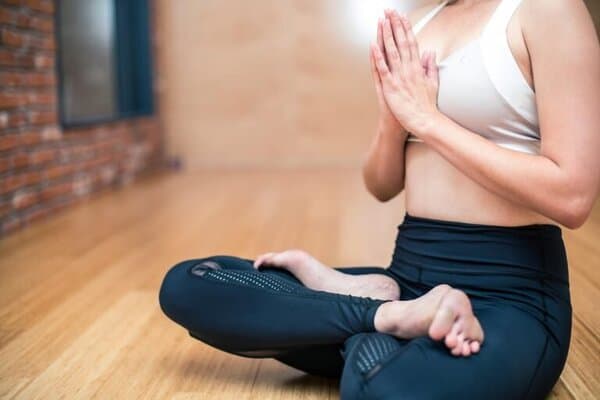10 Amazing Acro Yoga Poses for Beginners You’ll Love Trying
What Is Acro Yoga?
Acro yoga poses are a unique blend of yoga, acrobatics, and partner balancing — a practice that doesn’t just test your flexibility, but also builds trust, communication, and connection between partners. Unlike traditional yoga, where the focus is often inward, acro yoga invites you to engage outward — to fly, balance, and support someone else as they do the same for you.
Thank you for reading this post, don't forget to subscribe!Whether you’re a couple looking to deepen your bond or two friends trying something fun and fitness-oriented, acro yoga is a rewarding gateway to build strength, improve posture, and boost emotional connection.
But don’t let the stunning poses on Instagram intimidate you. Beginner-friendly acro yoga poses exist — and they’re just as exhilarating. No, you don’t need to be a gymnast or circus performer. All you need is an open mind, a patient partner, and a willingness to play.
In this post, we’ll guide you through 10 beginner acro yoga poses — complete with tips, safety notes, and benefits. These poses are ideal even if you’re new to yoga altogether.
Let’s fly!
Getting Started: Acro Yoga Basics
Before jumping into the poses, let’s clear up some key roles in acro yoga:
- Base: The person on the ground, offering support.
- Flyer: The person being lifted, balanced, or suspended.
- Spotter: Optional but recommended — someone watching to help prevent falls and guide posture.
Tip: Always warm up with some light partner yoga stretches. Communication is key. Make sure both partners understand each movement before attempting it.
1. Front Bird Pose (Base of Acro Yoga)
Also called “Superman pose” in acro yoga, the Front Bird is often the first pose beginners learn. It’s a foundational posture that teaches balance, alignment, and trust.
How to Do It:
- Base lies flat on their back with knees bent, feet raised.
- Flyer stands in front, facing the base, and places their hips on the base’s feet.
- Base straightens legs slowly while holding the flyer’s shoulders or hands.
- Flyer extends arms out (like Superman) and balances with a strong core.
Key Points:
- Engage your core muscles to stay steady.
- Communicate constantly: small shifts in weight matter.
- Start with a spotter if you’re new.
Benefits:
- Strengthens core and leg muscles (for both).
- Improves posture and body awareness.
- Builds trust and team coordination.
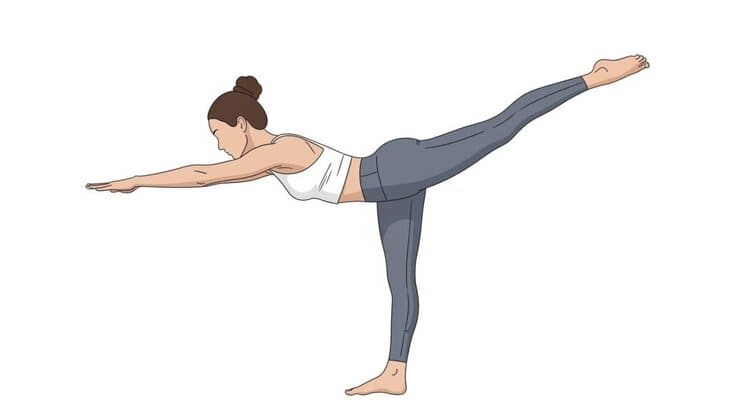

2. Throne Pose (Fun and Stable Acro Pose for Beginners)
The Throne Pose is playful and confidence-boosting — the flyer gets to “sit” like royalty while the base provides a solid seat. It’s great for building comfort in acro yoga without much risk of falling.
How to Do It:
- Base lies on their back with knees bent and feet flat.
- The Flyer steps up onto the base’s feet one at a time.
- The base places their feet under the flyer’s buttocks, lifting them while holding their ankles.
- The flyer sits upright, placing their hands on the base’s knees for support.
- Both partners hold the posture, keeping the flyer’s core active.
Key Points:
- Base’s legs should remain perpendicular to the floor.
- The flyer must sit upright with spine tall, avoiding leaning backward.
- Engage your glutes and thighs to help balance.
Benefits:
- Strengthens leg and ankle stability for the base.
- Improves posture and core control for the flyer.
- Great confidence-builder for beginners.
Pro Tip: Smile and hold hands for photos — it looks royal and makes for a perfect Instagram acro moment!


[Banner Ad Placement #2 — “Try This Lightweight Travel-Friendly Acro Yoga Mat” (Insert banner)]
3. Back Bird Pose (The Flying Heart Opener)
Ready for a deeper trust fall? The Back Bird Pose flips the flyer over so they’re facing up — creating a heart-opening, flying posture that’s incredibly therapeutic.
How to Do It:
- Base lies on the floor with legs up.
- The Flyer turns their back to the base and gently lowers their hips onto the base’s feet.
- As the base pushes upward, the flyer leans back, spreading arms open.
- Both partners adjust to find balance — the flyer should open the chest and arch the back slightly.
Key Points:
- The base must keep legs strong and feet flat against flyer’s sacrum (not lower back).
- The flyer should engage core and avoid collapsing into the lower back.
- Keep it gentle and slow — it’s more about openness than height.
Benefits:
- Stretches chest, shoulders, and spine.
- Builds deep emotional trust (flyer has no visual control!).
- Great for improving flexibility and counteracting desk posture.
Emotional Note: This pose feels symbolic — you’re literally “letting go” and allowing someone else to support your heart. It’s a favorite in acro healing workshops.
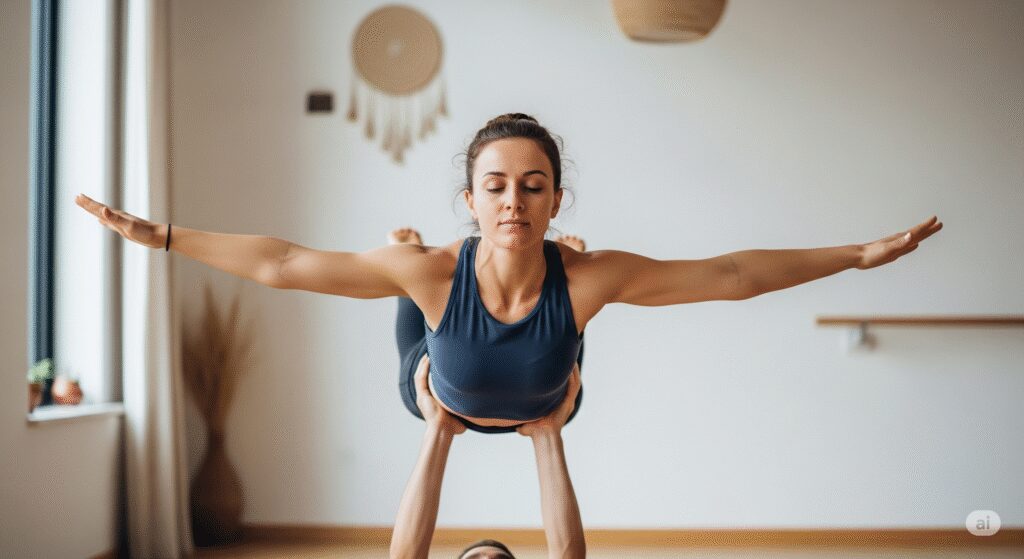

4. Whale Pose (Gentle Therapeutic Stretch)
Whale Pose is a flying heart opener with a deep supported backbend. Ideal for couples or partners who want to include therapeutic elements in their acro yoga practice.
How to Do It:
- The Base lies down and places feet on the flyer’s shoulder blades (angled slightly downward).
- The Flyer stands facing away, leans backward, and places arms overhead (into the base’s hands).
- As the flyer bends back, the base lifts with the legs, slowly arching the flyer into a supported backbend.
- Hold position gently, ensuring neck and shoulders are not strained.
Key Points:
- Base’s legs should provide slow, controlled lift.
- Flyer’s arms can be outstretched or held behind back — depending on comfort.
- Use a yoga bolster or folded towel under base’s hips for extra support.
Benefits:
- Deep chest and shoulder opening for the flyer.
- Relieves tension in back and neck.
- Therapeutic, calming, and ideal after long hours of sitting.
Healing Tip: Whale Pose is often used in partner yoga therapy sessions for emotional release and stress relief. You can even play soothing music in the background.


5. Flying Paschimottanasana (Flying Forward Fold)
Flying Paschi is the flying version of the seated forward fold — an energizing stretch that deeply opens the hamstrings for the flyer and strengthens the base’s legs. It’s calm, quiet, and incredibly grounding.
How to Do It:
- Base lies down and lifts legs straight up at a 90° angle.
- Flyer stands facing the base, holding hands and leaning forward into a forward fold.
- The base places their feet on the flyer’s hip bones, then slowly lifts them while guiding the flyer’s hips upward.
- Once in position, the flyer releases hands and stretches forward, letting arms dangle or hold ankles.
Key Points:
- The flyer should keep legs straight and core engaged.
- The base must align feet properly to avoid tipping.
- This is a passive pose — focus on lengthening, not pulling.
Benefits:
- Stretches hamstrings, calves, and spine for the flyer.
- Enhances balance and coordination for both.
- Calms the nervous system — great for winding down.
Mind-Body Tip: Practice deep breathing together while holding this pose. It activates the parasympathetic nervous system and invites calm.


6. Shoulder Stand on Base (Supported Inversion)
This pose is slightly more advanced but still accessible for adventurous beginners. The flyer stacks vertically in a shoulder stand, fully supported by the base’s arms and legs — making it a safer intro to inversions.
How to Do It:
- The Base lies on their back and places their feet on the flyer’s lower back or hips.
- Flyer begins in a plank or tuck position, then lifts legs upward into a straight line.
- The base uses hands to support flyer’s shoulders or upper back, creating a stable base.
- The flyer keeps core tight, legs straight, and chin tucked slightly.
Key Points:
- Communication is crucial — move slowly and deliberately.
- The flyer should engage inner thighs and abs.
- Start near a wall for safety if needed.
Benefits:
- Safe and effective way to practice inversions.
- Builds core strength, balance, and body awareness.
- Encourages circulation and spinal alignment.
Balance Tip: This pose might feel intimidating at first, but once mastered, it’s incredibly empowering and opens the door to advanced acro inversions.


7. Folded Leaf Pose (Restorative Flow Pose)
The Folded Leaf Pose is a relaxing and therapeutic position — the flyer hangs over the base’s legs in a passive forward bend. It’s often used between more intense poses to reset and reconnect.
How to Do It:
- Base lies down and lifts legs to 90°.
- The Flyer places hips on the base’s feet (as in Front Plank), then folds forward from the hips.
- Arms dangle loosely or rest beside the base’s shins.
- The base can hold the flyer’s shoulders or hips for added stability.
Key Points:
- The flyer’s spine should be long and relaxed.
- Keep breathing slow and steady.
- Let gravity do the work — don’t pull or resist.
Benefits:
- Gently stretches spine, shoulders, and back.
- Helps release emotional tension and anxiety.
- Allows for deep connection and shared mindfulness.
Emotional Release Insight: Many people experience unexpected emotions in this pose due to its vulnerability and surrender. It’s a perfect acro move for healing-based yoga.
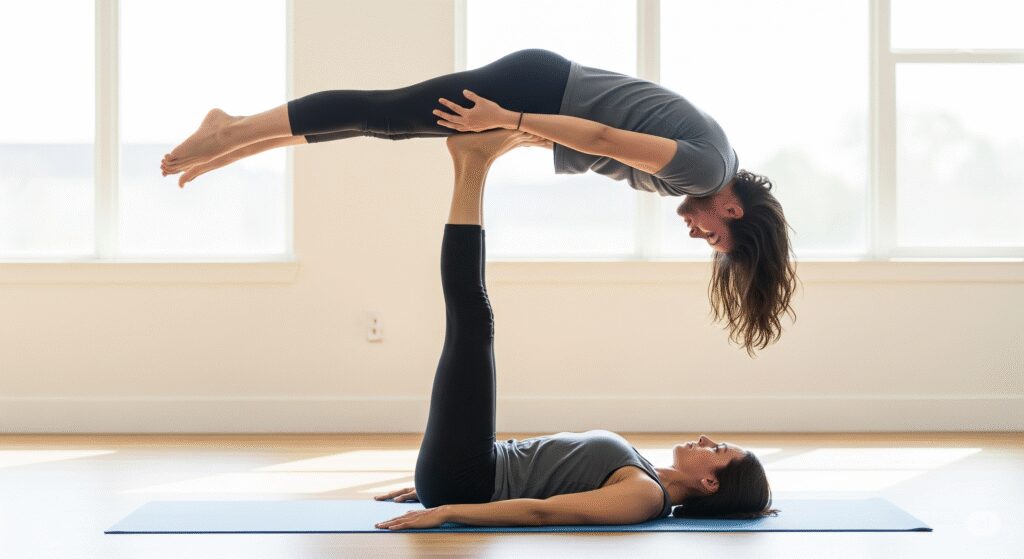

8. Star Pose (Side Star)
Star Pose is one of the most striking beginner-friendly poses in acro yoga. It builds serious strength and trust while making you look like a sky-bound superhero.
How to Do It:
- The base lies flat, legs at 90°, and places one foot on the flyer’s inner thigh, the other on the opposite hip.
- The flyer starts in a sideways plank position (side body down), leaning weight into the base’s feet.
- On a count, the base presses upward, lifting the flyer who opens into a side star shape — one arm up, one down.
- Flyer keeps body strong, core and glutes activated, and arms extended in opposite directions.
Key Points:
- Start low and slow. The base should adjust foot positions carefully.
- Flyer must engage side-body muscles to hold line.
- Keep eyes on each other for extra balance cues.
Benefits:
- Boosts shoulder and side-body strength.
- Improves communication and proprioception.
- Makes a fun, impressive photo-worthy move.
Pro Tip: This one is Instagram gold. Choose a nature backdrop or sunset for your Star Pose practice!
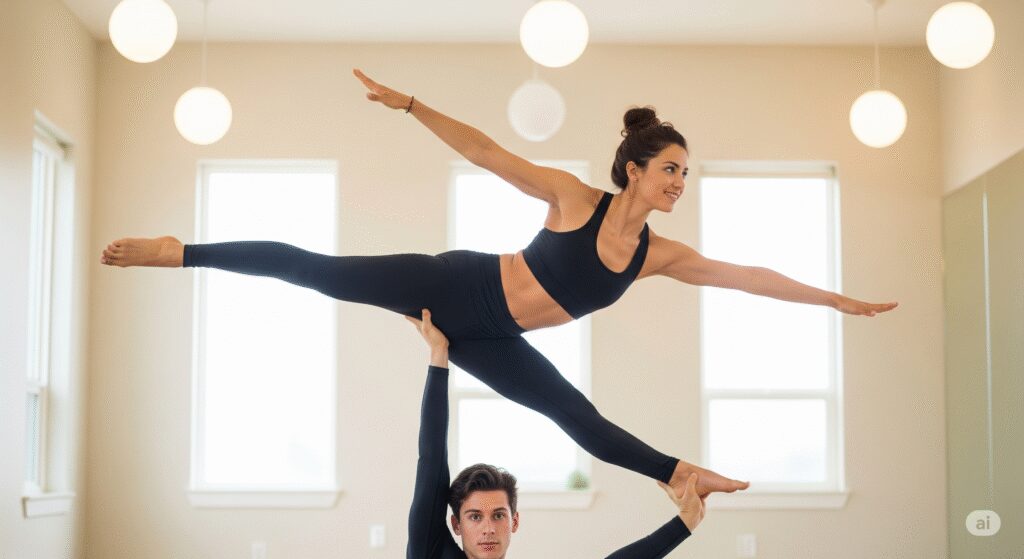

9. Straddle Throne (Wide-Legged Seated Pose)
This is a playful, seated position perfect for selfies and fun — the flyer sits upright on the base’s feet, legs in a wide straddle, making a classic “throne.”
How to Do It:
- The base lies on their back and lifts feet parallel, toes pointing up.
- The flyer steps onto the base’s feet and sits down carefully.
- Once secure, the flyer opens the legs into a straddle (V-shape), keeping arms extended or on hips.
- The base maintains firm feet under the flyer’s sit bones, supporting with hands if needed.
Key Points:
- Flyer should keep spine tall and hips grounded.
- Great for beginners to practice balance before transitioning to flows.
- Use a spotter in early attempts.
Benefits:
- Stretches inner thighs and hips.
- Builds confidence in upright balancing.
- Looks fun, friendly, and social.
Fun Variation: Try adding “namaste” hands or silly expressions. Straddle Throne is made for joy!
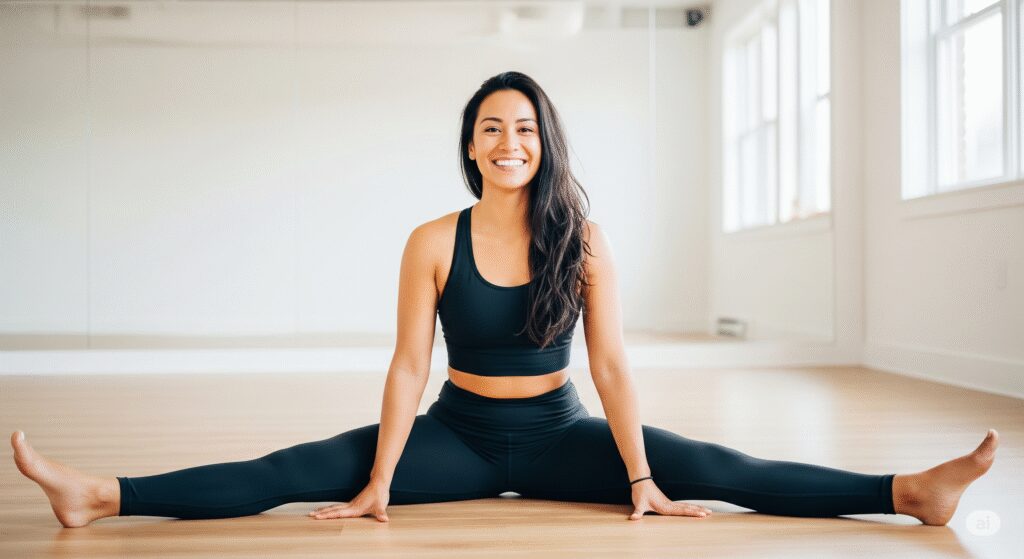

10. Super Yogi (Superman Flow Variant)
The Super Yogi is a variation of Front Plank with arms extended like Superman — it challenges balance, strength, and playfulness all in one.
How to Do It:
- Start in basic Front Plank (flyer flying horizontally, base lying flat with legs up).
- Flyer extends arms forward, legs straight back, engaging core and glutes — like flying!
- Base supports hips or thighs and makes minor foot adjustments to maintain lift.
Key Points:
- Great core challenge for the flyer.
- Base must stay grounded and keep toes active.
- Arms stretched = more difficulty. Modify with bent elbows if needed.
Benefits:
- Strengthens back, core, shoulders.
- Teaches spatial awareness and control.
- Perfect transition pose for flows and creative sequences.
Inspiration Tip: Name your pose! “Super Michael” or “Flying Serenity” — give it personal meaning.
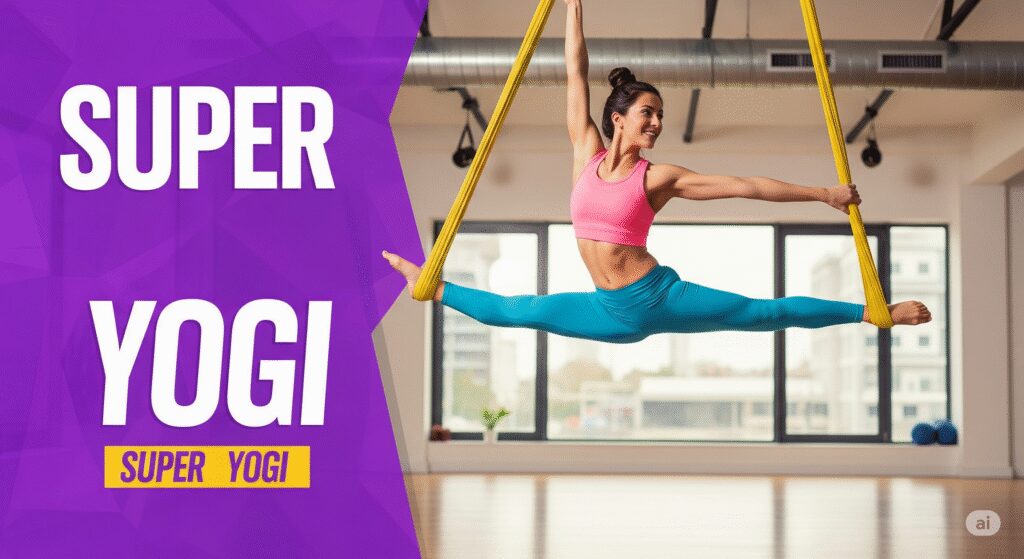

1. Partner Prep: Building Trust Before You Fly
Before you jump into flying poses, the most important foundation isn’t physical — it’s emotional trust.
Acro yoga isn’t just about strength and balance. It’s about feeling safe enough to let go — physically and mentally. So here’s how to prep with your partner:
1. Eye Contact is Everything
Before lifting off, spend a few seconds looking into each other’s eyes. This simple act sets a tone of presence and connection.
2. Establish Clear Signals
Have a system:
- “Up” = ready to fly
- “Down” = lower me now
- Tap twice = discomfort or real pain
This helps prevent injury and builds confidence.
3. Do Trust-Building Warm-Ups
- Try mirror yoga: Copy each other’s movements in sync.
- Try lean-backs while holding hands — feeling one another’s weight.
These practices prime your nervous system to relax into the connection, which is key for balance.
4. Respect Each Other’s Limits
Your partner may feel nervous or hesitant at first — don’t push it. Instead, stay playful and positive. Progress in acro yoga comes faster with patience.
Healing Insight: If you’ve ever had trust issues or control struggles in relationships, acro yoga might bring those patterns up. Use that as a space for emotional growth and reflection.


2. Is Acro Yoga Safe for Beginners?
Yes — but only if approached with care, communication, and support. Here’s your beginner safety checklist:
1. Always Warm Up First
Start with 10–15 minutes of dynamic stretches:
- Cat-Cow
- Downward Dog
- Hamstring stretches
- Hip openers (Lizard, Pigeon)
This prepares your joints and fascia for balancing movements.
2. Use a Spotter
In early attempts, always have a third person to assist — especially for moves like Front Plank, Star Pose, or Throne.
A good spotter can prevent:
- Twists and awkward landings
- Slipping or panicking
- Shoulder or lower back strain
3. Stay on Soft Surfaces
Practice over:
- Yoga mats (double layer is better)
- Grass
- Padded flooring
Avoid hard tiles or concrete — even for seated poses.
4. Breathe Together
If either of you holds your breath, it can signal tension. Practice synchronized breathing before and during the poses. It:
- Improves timing
- Helps relax the nervous system
- Keeps the vibe calm
Emotional Note: Let your breath be the bridge. When one partner exhales, the other can match — this creates a subtle yet powerful bond of presence.
3. What Should I Wear for Acro Yoga?
Beginner mistake? Wearing loose clothes that bunch up or slip.
Best Outfit Tips:
- Tops: Fitted tank or sports tee (no zippers)
- Bottoms: High-rise yoga leggings or fitted shorts
- Avoid: Jewelry, baggy pants, lotions on hands/legs
If you’re the base, grip matters — bare feet and dry skin give more control.
For flyers, choose lightweight clothing that won’t slide off the base’s feet or hands.
Pro Tip: Carry a small towel. Sweat can make gripping difficult — especially during warm-ups or in humid areas.
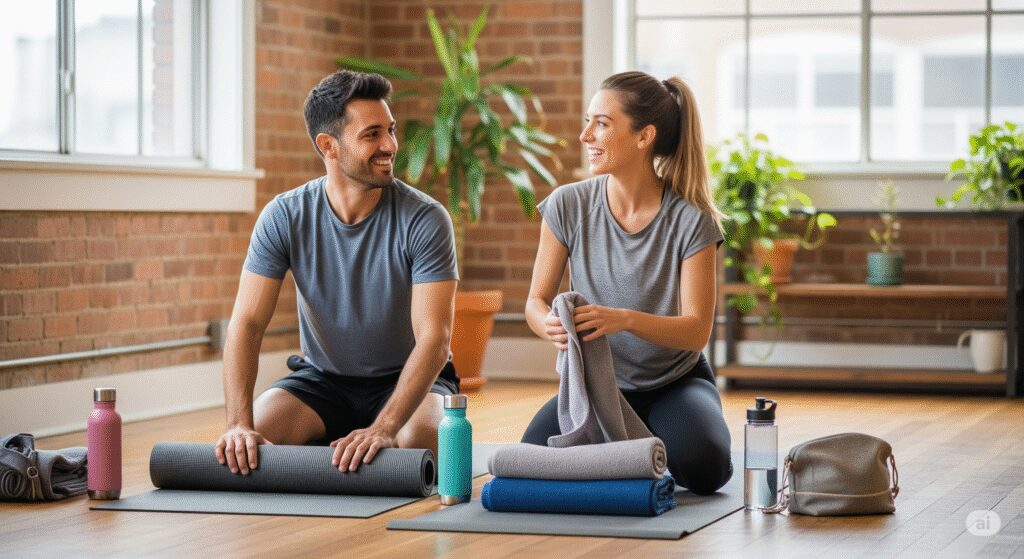

4. Emotional Healing Through Acro Yoga
(A Hidden Power Nobody Talks About)
For many, acro yoga becomes more than just movement — it’s a mirror for deep emotional patterns.
1. Letting Go of Control
As a flyer, you’re forced to release control and surrender to your partner’s support. This can bring up fear, resistance, or even childhood trauma related to trust and safety.
If you’ve ever felt “I can’t rely on anyone,” acro yoga can help rewrite that story — slowly and safely.
2. Rebuilding Body Confidence
Many beginners (especially women) fear being “too heavy” to fly. But acro yoga teaches you:
- Every body is liftable
- Your weight is not a problem — it’s just physics and leverage
- You’re worthy of support, no matter your size or shape
As you feel yourself lifted and held, your nervous system registers a new experience of worthiness.
3. Repairing Relationship Wounds
Couples who practice together often notice:
- Arguments reduce
- Communication improves
- They laugh more and fight less
That’s because play is healing. And acro yoga is deep play rooted in mutual care.
4. Soothing Anxiety Through Movement
The rhythmic flow of partner balancing calms the vagus nerve, which regulates your stress response.
Especially helpful for:
- Anxiety-prone individuals
- Overthinkers
- People recovering from trauma or burnout
Healing Insight: Many yoga paths work with the mind. Acro yoga goes through the body to reach the heart.


5. Can I Practice Acro Yoga Alone?
Yes — and you should. Solo practice helps build strength and flexibility for partnered poses.
Here are 3 great solo acro prep moves:
1. Boat Pose (Navasana)
Strengthens core and hip flexors.
- Sit on your mat
- Lift legs up and extend arms forward
- Hold for 30–60 seconds
2. Wall L-Sits
Mimics the base’s leg position for flying poses.
- Lie on your back
- Place feet on wall at 90°
- Engage thighs and press into the wall for 1 minute sets
3. Bridge Pose (Setu Bandhasana)
Opens the chest and hips — vital for both roles.
Practicing these builds confidence, awareness, and readiness — so you feel grounded even before a partner lifts you.


6. Ideal Playlist for Acro Yoga Flow
The right music transforms the practice from “exercise” to soulful connection.
Here’s a beginner-friendly acro yoga playlist vibe:
| Track | Artist | Mood |
|---|---|---|
| “Weightless” | Marconi Union | Deep calm |
| “Lotus Flower” | Radiohead (instrumental) | Floaty |
| “Breathe” | Télépopmusik | Rhythmic flow |
| “Awake” | Tycho | Light & dreamy |
| “Sun Will Set” | Zoë Keating | Emotional release |
Use low-BPM tracks without strong lyrics — this keeps attention on the body and breath.
🎧 Spotify Tip: Search “Acro Yoga Flow” or “Partner Yoga Chill” for curated soundtracks.
7. Common Mistakes Beginners Make in Acro Yoga
Even though acro yoga looks playful and light, beginners often fall into a few traps. Knowing these in advance saves injury, embarrassment, and frustration.
1. Skipping the Warm-Up
You must warm up both your body and connection. Cold muscles and misaligned communication = the #1 cause of partner yoga injuries.
Fix: Do a 5–10 minute warm-up of sun salutations, hip openers, and joint mobility together.
2. Forcing the Pose
This isn’t gymnastics. Acro yoga isn’t about “nailing the move” — it’s about being present and fluid.
Fix: Focus on small adjustments, breath sync, and finding the joy — not perfection.
3. Poor Communication
Saying nothing mid-pose? That’s a recipe for disaster. Saying too much? Also a mess.
Fix: Use short, clear cues:
- “Lower a bit”
- “Engage core”
- “Let’s come down”
4. Ignoring Spotting
Even seasoned duos can fall. Without a spotter, you risk head/neck injuries.
Fix: Always have a third person to guide, catch, or correct. Even in casual play.


8. How to Make Acro Yoga Part of Your Wellness Routine
You don’t need a full-blown class to enjoy the benefits of partner yoga. Just a 15–30 minute weekly flow can uplift your mood, muscles, and mindset.
Weekly Acro Flow Plan (for Beginners)
| Day | Activity |
|---|---|
| Monday | Solo strength training (core + legs) |
| Wednesday | Practice 2–3 beginner poses (Bird, Throne) with a partner |
| Friday | Flow + stretch + cool-down |
| Sunday | Watch tutorials, journal on connection/trust progress |
Pro Tip: Record your flows weekly — you’ll notice confidence and trust visibly grow.


Best Gear for Acro Yoga at Home
You don’t need much, but these tools elevate the experience:
- Thick yoga mat (≥6mm) – Prevent wrist and hip bruising
- Yoga blocks – Great for support when learning base roles
- Knee sleeves or cushions – Especially useful for flyers practicing sits or backbends
- Essential oils (e.g., lavender or peppermint) – Calm nerves and improve focus
FAQ
1. Is acro yoga safe for beginners?
Yes — when practiced with communication, consent, and a spotter, acro yoga is beginner-friendly and low-risk. Start with foundational poses and don’t push beyond comfort.
2. Can I do acro yoga without a partner?
You can train solo to improve core strength, flexibility, and balance. But true acro yoga requires a partner. Apps, local studios, or online communities can help you connect with others.
3. What if I’m not flexible or strong enough?
That’s totally okay. Many beginners think acro yoga needs elite fitness — but it’s more about technique, breath, and trust than brute strength or bendiness.
4. How often should I practice acro yoga?
2–3 times per week is ideal for beginners. Focus on quality over quantity, ensuring each session includes warm-ups, 2–3 poses, cooldown, and open conversation.
5. What’s the difference between acro yoga and regular yoga?
Acro yoga combines yoga, acrobatics, and Thai massage, while regular yoga is a solo mat practice. Acro adds a layer of connection, balance, and trust-building that’s unique.
Disclaimer:
Important: The content on this page is for informational and educational purposes only. Acro Yoga involves physical movement that may pose a risk of injury if not performed correctly. Always consult your physician before starting any new fitness activity. Practice with a trained partner and under the guidance of a certified yoga instructor.
Affiliate Disclosure: This post may contain affiliate links. This means we may earn a small commission—at no extra cost to you—if you make a purchase through our links. We only recommend products, retreats, or training programs we genuinely believe in. Your support helps keep ThriveInSerenity.com running and focused on sharing healing tools with the world.

